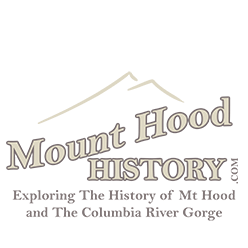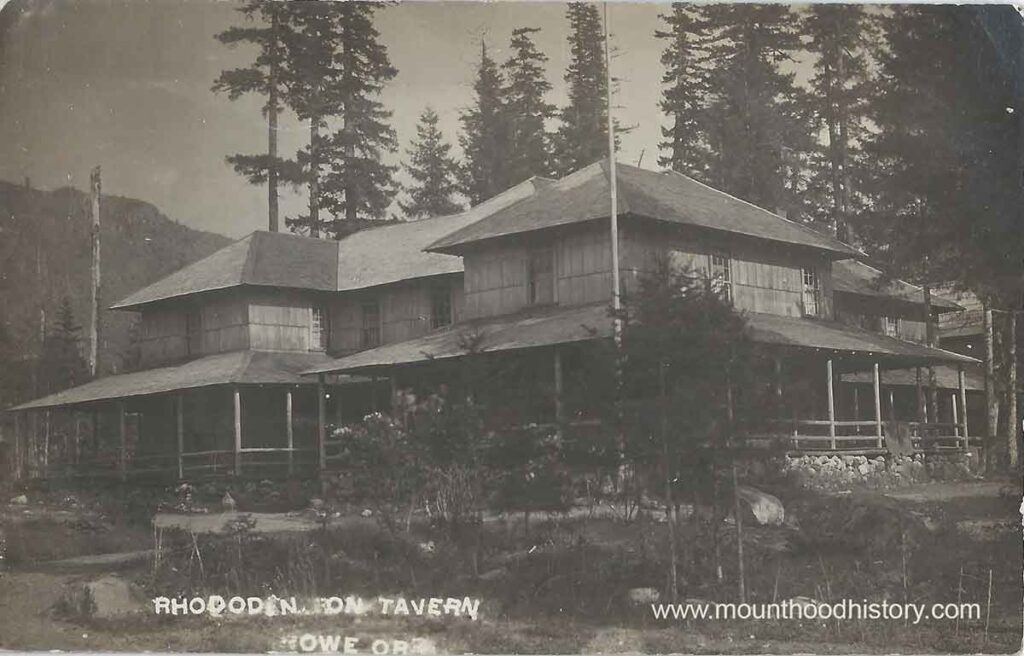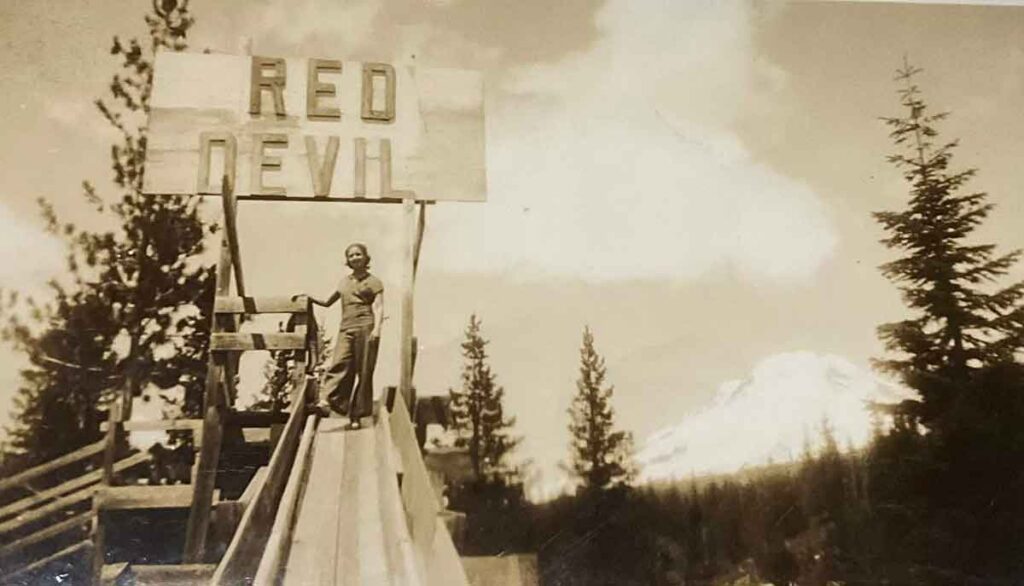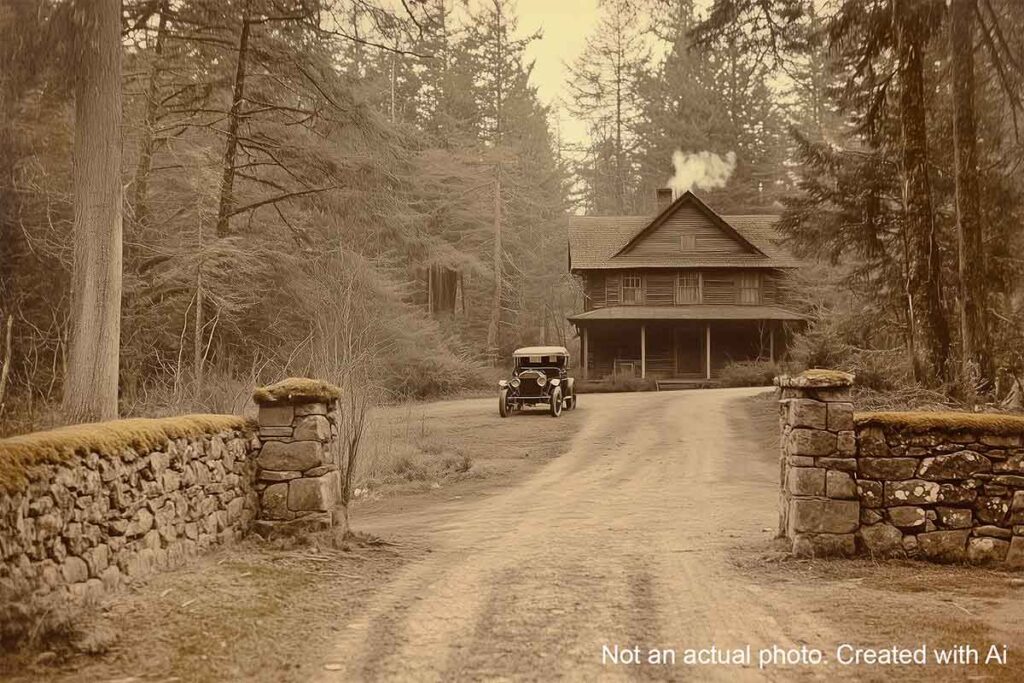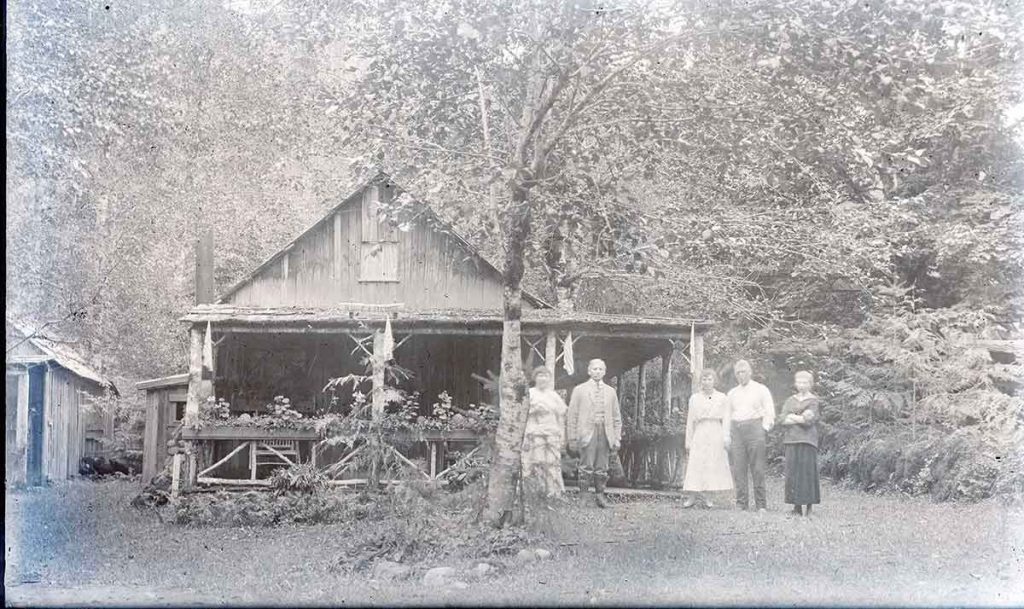Hidden beneath the towering firs of Mount Hood’s forests, the Rhododendron Inn once stood as one of Oregon’s most celebrated mountain retreats. In the early 20th century, it welcomed weary travelers, outdoor enthusiasts, and adventure seekers. Today, the inn is gone, but its story remains—woven into the history of the region.
Summit Meadow Pioneer Cemetery
Near Government Camp, Oregon, within view of Mount Hood, at the Summit Meadow Pioneer Cemetery
The Red Devil Toboggan Slide
In the early days of winter recreation on Mount Hood, long before chairlifts and ski resorts, Government Camp was home to an exhilarating and dangerous attraction—the Red Devil Toboggan Slide.
Howard’s Hotel at Sharon Springs
Howard’s Hotel at Sharon Springs: A Lost Piece of Zigzag’s History
Historic Glass Plate Negatives
This is an early view of when Billy Welch’s Ranch was in transition from a camp ground to an era of summer cabins.
